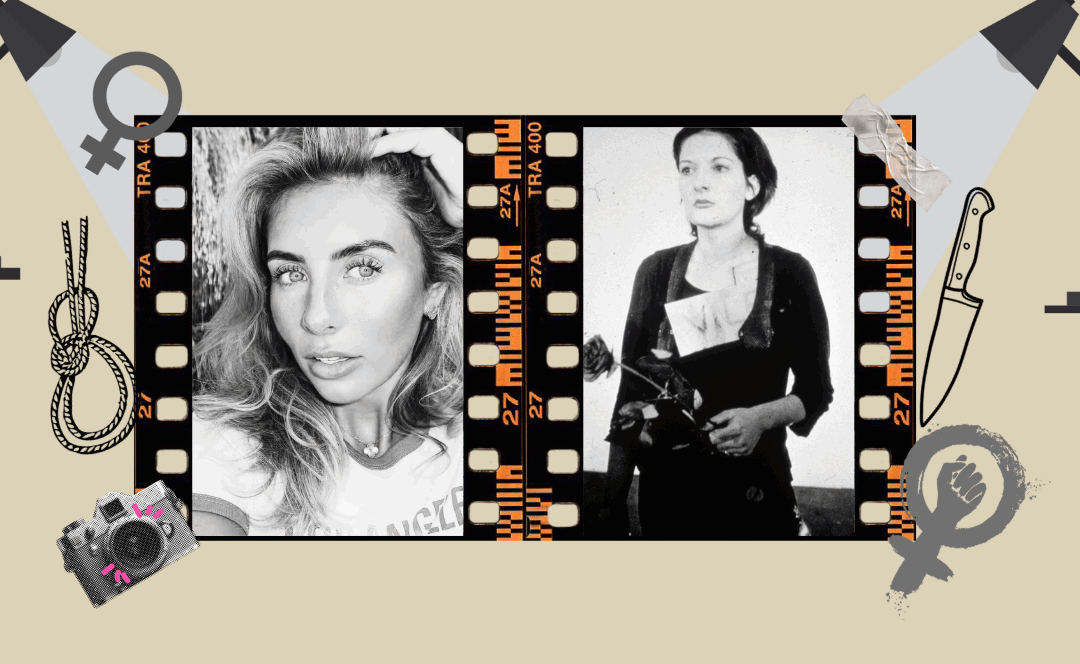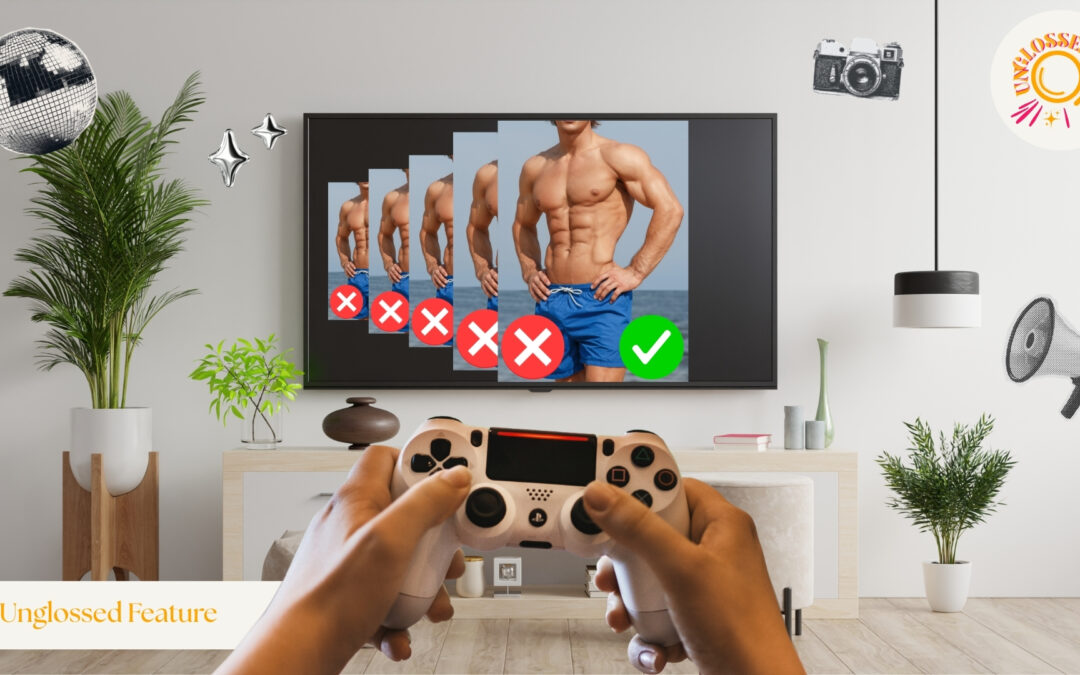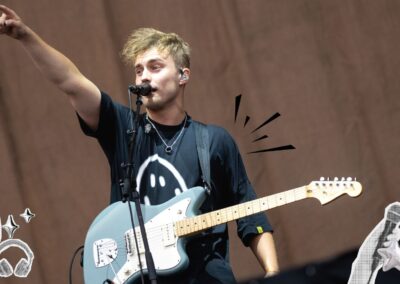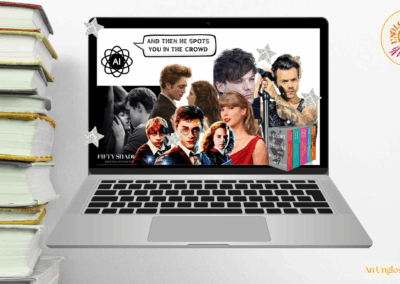From low-rise jeans to digital cameras, Gen Z is reviving the early 2000s. But what if this aesthetic revival is less about fashion, and more about emotional survival in an age of digital burnout?
Paris Hilton is back on moodboards. Flip phones are trending. Blurry digicam photos flood Instagram feeds like it’s 2004. It’s official: we’re dressing like it’s the early 2000s.
But why are Gen Z so obsessed with an era they didn’t even experience?
Part of it, of course, is the natural cycle of fashion – trends return, whether we’re ready for them or not. But to me, the Y2K revival feels different. In an age of constant connection, facial recognition, and social media surveillance, Y2K’s grainy chaos offers a strange kind of comfort… even as a 2003 baby myself.
As Jessica Maddox, associate professor of digital media at the University of Alabama, puts it: “Trends are cyclical, sure, but the return of Y2K now isn’t an accident. We’re in a time of deep uncertainty: politically, technologically, globally, and that mirrors the early 2000s. It makes sense that we’re returning to a time that, even if it wasn’t easier, feels like it was.”
The question isn’t just why Gen Z is bringing back Y2K, but what they’re really bringing back. Is this just another aesthetic amongst all the others, or is it a longing for simplicity and identity stability in a hyper-digital age?
The Y2K aesthetic is nothing if not instantly recognisable. It’s low-rise jeans. Rhinestone-studded tanks. Butterfly clips, pixel fonts, flip phones. It’s Bratz dolls, MySpace layouts, and paparazzi shots of ‘It Girls’ in Juicy Couture tracksuits.
Mean Girls, Clueless, and early 2000s party girls are cultural reference points again, but why now?
“Social media is incredibly visual,” says Jessica. “That’s why trends like fashion and beauty move so fast, they’re the first thing we see. And Y2K, which is so visually distinct, thrives on platforms like TikTok and Instagram.”
But it’s not just about visual appeal. The early 2000s also mark the last era before social media fully colonised our lives. That makes the aesthetic feel like a kind of cultural artifact from a time before constant updates, before filters, before apps that track your every move.
And that, perhaps more than the butterfly clips or bedazzled belts, is why it’s back.
The early 2000s marked the last breath of digital freedom before the internet got overbearing. Back then, a flip phone could only do so much. A MySpace page was messy, anonymous, and constantly glitching, but it didn’t demand constant self-curation. For Gen Z, that distance is inevitably seductive.
“Back then, we were more in control of our digital lives,” says Jessica. “Now we’re so plugged in – not just to each other, but to everything. News, doom scrolling, constant input. It’s exhausting. I think we long for something simpler, and Y2K represents that, not because it was simple, but because our memories and images of it feel simpler.”
This aesthetic signals a desire to pull back and to exist in low-resolution again. To wear something chaotic and sparkly without explaining it. To take blurry photos and post them without filters. To be untraceable, even for a moment.
In that sense, Y2K isn’t just a look, it’s an emotional coping mechanism and a way of not being watched.
But there’s a strange dissonance at the heart of the Y2K revival, because many of the people most devoted to it never actually lived through it. For most of Gen Z, the early 2000s aren’t a memory, they’re a vibe and an aesthetic.
This is what academics call synthetic nostalgia: a longing for a past you never personally experienced, but feel emotionally invested in anyway. “It’s much easier to romanticise a time you didn’t live through,” says Jessica. “You don’t carry the baggage, just the filtered memories and visuals. That’s especially powerful on social media, which is such a visual space. It’s easy to share and replicate trends without the context that originally shaped them.”
Because amongst the fun visuals of the Y2K aesthetic, a lot gets missed out. Y2K wasn’t just all fun and glamour, it was also the era of heroin chic, diet culture, and relentless tabloid misogyny.
Low-rise jeans weren’t just a trend, they were part of a beauty standard that punished anyone without a flat stomach. And for all its glitter and freedom, early 2000s media was dominated by whiteness, thinness, and exclusion.
Jessica warns that the return of these aesthetics can quietly revive the harmful values that came with them: “There’s a real danger in romanticising the damaging parts. We’re seeing a return to ultra-skinny beauty ideals, and for those of us who lived through it the first time, we know how destructive that was. Fashion and beauty don’t exist in a vacuum, they reflect what society values, and we need to be careful about what we’re saying is worth bringing back.”
And of course, that doesn’t mean the aesthetic can’t be playful or expressive – there’s nothing wrong with a bit of nostalgia. But it’s important to remember that nostalgia comes with responsibility, especially when the version of the past we’re resurrecting is more fantasy than fact.
So at a glance, the Y2K aesthetic might look like just another microtrend, but peel it back, and it feels more existential than expressive. Ultimately, it’s emotional escapism coded in rhinestones.
We’re living in a time defined by economic precarity, climate dread, and digital surveillance, and in that context, the obsession with the early 2000s feels less like trend-chasing and more like a longing for a moment that seems, at least from afar, more carefree, less curated, and less watched.
“We’re all trying to chase a feeling we can’t quite get back,” says Dr. Maddox. “The world was different then, and even if it wasn’t easier, it feels like we had more control and more distance. I think on some level, we want that less.”
And Y2K isn’t the only aesthetic we’re chasing, because there are also the “core” aesthetics: clean girl, coquette core, bimbo core. Each one offers not just a look, but a lifestyle blueprint and a way to self-identify in a culture that constantly demands rebranding.
“There’s good and bad in it,” Jessica explains. “Trying on trends can be playful, even empowering. But if you’re constantly living by the trend cycle, it can be hard to develop a stable sense of self, especially when social media is constantly telling you who to be, what to eat, how to dress.”
So in a world where aesthetics change by the hour and trend cycles move faster than anyone can keep up, maybe this revival is a symptom of something broader: a generation feeling detached, searching for a stable sense of identity in a culture that keeps shifting.
We’re not just romanticising low-rise jeans or flip phones. We’re romanticising a time when we weren’t expected to perform our identities 24/7. “It’s always about chasing a feeling,” says Jessica. “Even if the past wasn’t perfect, it feels more manageable than the present, and that’s powerful, especially when you’ve grown up being watched.”











